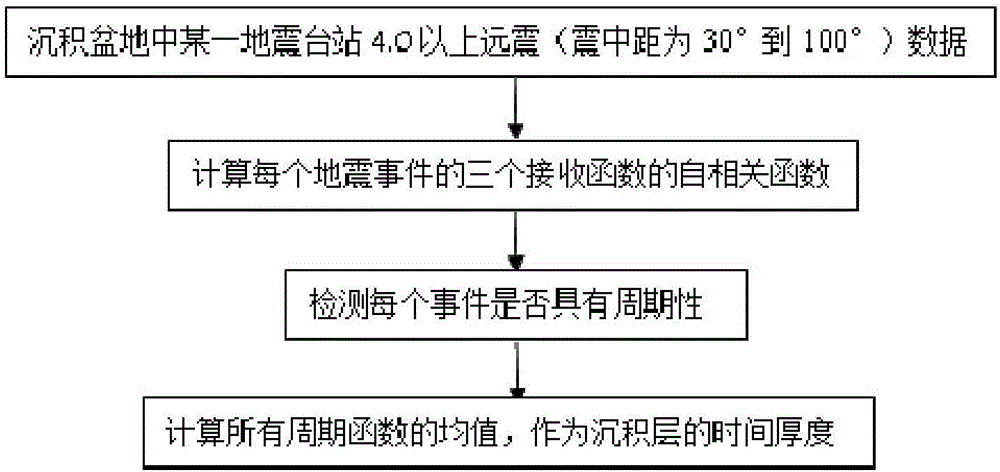A method of periodically measuring the time thickness of a sedimentary strata using a receiver function
A time-thickness and periodic technology, applied in the field of solid geophysics research, can solve the problems of expensive drilling method, inability to guarantee base reflection, high cost, etc.
- Summary
- Abstract
- Description
- Claims
- Application Information
AI Technical Summary
Problems solved by technology
Method used
Image
Examples
Embodiment 1
[0040] The method of the present invention was used in the Williston Basin of North America. The basin is rich in oil and gas resources and is a typical Karatonic basin. The area of the basin is in the range of latitude 41° to 50° and longitude -111° to -95°. Select all seismic stations in this area, a total of 307. From the data processing center of IRIS (Incorporated Research Institutions for Seismology), the data of 2459 teleseismic earthquakes of magnitude 4 or above at these stations since 1980 were obtained. After basic processing of these data, the receiver function was obtained, and the total is 2459&*307 = 754913 pieces. In the processing, the time when the converted wave generated by the seismic wave on the Moho arrives at the station is set as time 0, and the receiving function that can be used in the research of the present invention is selected according to whether there is an obvious converted wave at time 0. figure 2 and Figure 4 What is shown is the sel...
PUM
 Login to View More
Login to View More Abstract
Description
Claims
Application Information
 Login to View More
Login to View More - Generate Ideas
- Intellectual Property
- Life Sciences
- Materials
- Tech Scout
- Unparalleled Data Quality
- Higher Quality Content
- 60% Fewer Hallucinations
Browse by: Latest US Patents, China's latest patents, Technical Efficacy Thesaurus, Application Domain, Technology Topic, Popular Technical Reports.
© 2025 PatSnap. All rights reserved.Legal|Privacy policy|Modern Slavery Act Transparency Statement|Sitemap|About US| Contact US: help@patsnap.com



